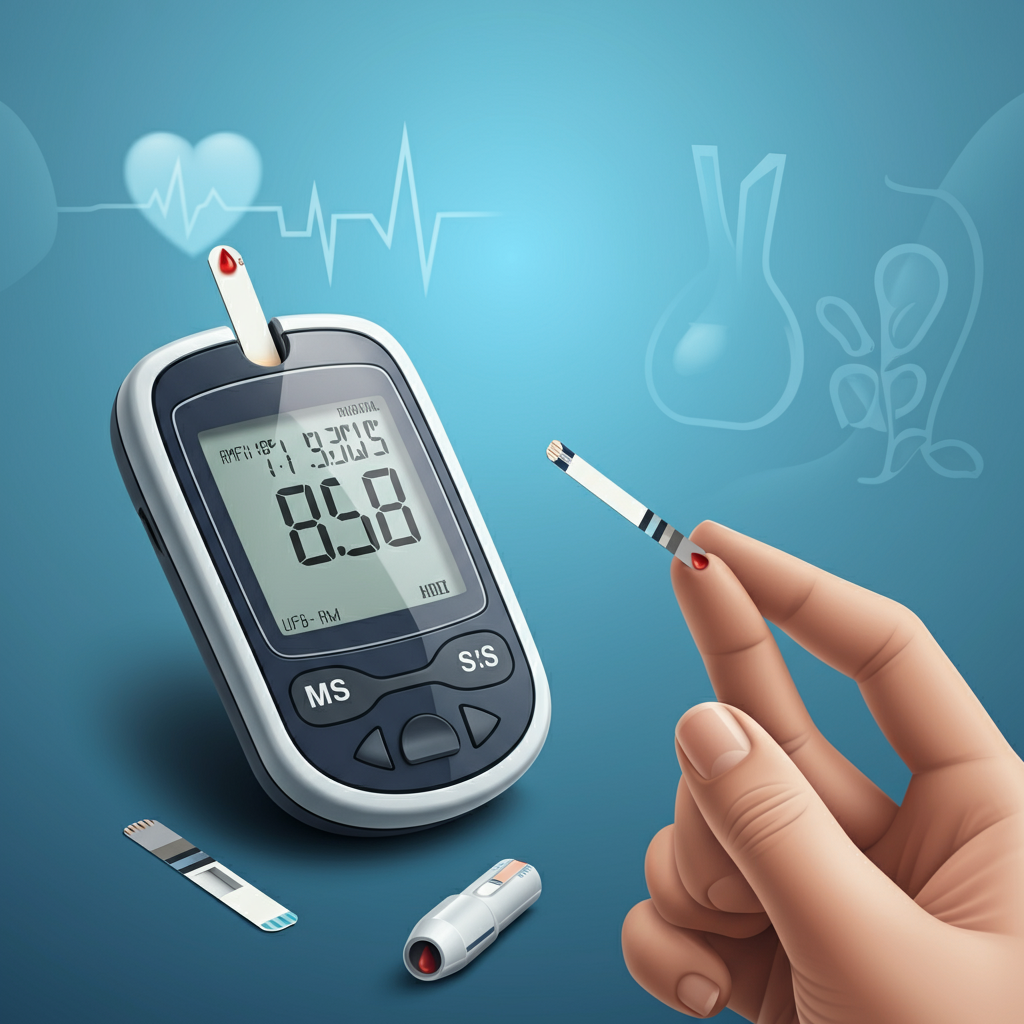Blood Sugar Monitor: How to Track and Manage Your Blood Sugar Levels
Managing blood sugar levels is a critical aspect of living with diabetes and maintaining overall health. Whether you’re newly diagnosed, caregiving for a loved one, or simply health-conscious, understanding how to effectively monitor and manage blood sugar levels can pave the way to improved well-being. This article will guide you through the essentials of blood sugar monitoring, with insights on tools, techniques, and lifestyle adjustments to help you take control of this vital aspect of your health.
Why is Blood Sugar Monitoring Important?
Monitoring blood sugar levels is a powerful way to take charge of your health. Frequent testing empowers you to understand how your body reacts to food, exercise, stress, and medication, enabling better decision-making and reducing the risk of complications in people with diabetes.
Who Should Monitor Their Blood Sugar?
- People with Diabetes: Essential for managing Type 1, Type 2, or gestational diabetes.
- Caregivers: To help monitor loved ones who may struggle with consistency, such as the elderly.
- Health-Conscious Individuals: Even without a diabetes diagnosis, monitoring can uncover trends or potential early warning signs of health conditions.
Understanding Blood Sugar Levels
Normal Blood Sugar Ranges
Blood sugar levels fluctuate throughout the day based on factors like diet, activity, and sleep. Here’s a quick reference:
- Fasting: 80–130 mg/dL
- Two Hours Post-Meal: Below 180 mg/dL for diabetics; 140 mg/dL or lower for non-diabetics.
Factors Affecting Blood Sugar Levels
- Dietary Choices: High-carb meals cause spikes, while fiber-rich foods offer steadier levels.
- Exercise: Physical activity generally lowers blood sugar, but intensity and timing matter.
- Stress: Emotional or physical stress can lead to spikes.
- Medications: Such as insulin or diabetes drugs, directly impact levels.
How to Use a Blood Sugar Monitor
Types of Blood Sugar Monitors
- Standard Glucometers: Affordable and reliable devices that require a blood sample.
- Continuous Glucose Monitors (CGMs): Advanced systems providing real-time readings with minimal effort.
Step-by-Step Guide to Testing Blood Sugar
- Wash your hands to ensure an accurate reading.
- Insert a test strip into your glucometer.
- Use a lancet to collect a small drop of blood.
- Apply the drop to the test strip.
- Wait for your monitor to display the reading.
- Log the result in a journal or app for tracking.
For CGM users, many systems allow data synchronization directly to a smartphone, providing trends and insights.
Managing Blood Sugar Through Diet
Foods That Raise Blood Sugar
- Refined carbs like white bread, pasta, and sugary drinks can cause significant spikes.
- Sweet treats and processed snacks should be limited for better blood sugar control.
Meal Planning Tips for Stable Blood Sugar
- Balance Your Plate: Combine proteins, healthy fats, and low-glycemic carbs.
- Portion Control: Avoid overeating; use smaller plates to manage portions.
- Stay Consistent: Aim for regular meal times to avoid blood sugar fluctuations.
Pro tip: Keep some low-carb, diabetes-friendly recipes handy, ensuring tasty yet stable meals.
The Role of Exercise in Blood Sugar Control

Best Exercises for Managing Blood Sugar
- Aerobic Exercises: Walking, jogging, or swimming are excellent for lowering blood sugar levels.
- Resistance Training: Builds muscle, improving insulin sensitivity.
- Yoga: Helps with stress reduction, which indirectly supports stable sugar levels.
Tips for Exercising Safely with Diabetes
- Check blood sugar levels before and after workouts.
- Carry fast-acting carbohydrates like glucose tablets in case of hypoglycemia.
- Customize intensity to your fitness and medical condition.
Insulin and Blood Sugar Management
How Insulin Works
Insulin helps your body convert glucose into energy. For those with diabetes, administering the right dosage is essential.
Adjusting Insulin Dosages
Speak with your healthcare provider to determine adjustments based on:
- Activity levels
- Dietary intake
- Stress or illness
Hypoglycemia and Hyperglycemia
Symptoms and Management of Hypoglycemia
Symptoms:
- Shakiness, sweating, irritability, and confusion.
Management:
- Consume 15 grams of fast-acting carbohydrate (e.g., juice or glucose tablets).
- Recheck levels in 15 minutes and repeat if necessary.
Symptoms and Management of Hyperglycemia
Symptoms:
- Increased thirst, frequent urination, and fatigue.
Management:
- Drink water to stay hydrated and flush excess sugar.
- Use insulin if prescribed and adjust dosages as directed.
Emerging Technologies in Blood Sugar Monitoring
Innovations like Continuous Glucose Monitoring (CGM) systems have revolutionized blood sugar tracking. Smart CGM devices integrate with mobile apps to provide real-time insights, along with alerts for unusual fluctuations. Devices such as the Dexcom G6 and FreeStyle Libre reduce manual testing and improve diabetes management for busy individuals.
Blood Sugar Monitoring and Overall Health
Monitoring is not just about measurements; it’s about the long-term benefits:
- Reduced Complications: Keep risks of nerve damage, kidney issues, or heart disease at bay.
- Improved A1C Levels: Accurate tracking leads to better control, reflected in improved long-term glucose metrics.
- Enhanced Mental Well-being: Consistency reduces worries about unexpected sugar highs or lows.
Real-Life Inspiration to Motivate You
- Sarah, a Type 2 diabetic, lowered her A1C levels significantly within six months by combining regular monitoring, strategic diet adjustments, and light exercise.
- David, a Type 1 athlete, uses CGM to tailor his training and insulin dosages, ensuring he maintains peak performance without blood sugar interruptions.
Take Charge of Your Blood Sugar Today
Blood sugar monitoring doesn’t need to feel like a chore. With the right tools, techniques, and support, anyone can achieve healthier, more stable levels. Whether it’s adjusting your diet, exploring the latest CGM technology, or ensuring you’re balancing insulin with exercise, every step forward matters.
Need help getting started? Explore our range of blood sugar monitors and management tools. Don’t forget to subscribe to our newsletter for expert tips, the latest research, and valuable resources tailored to your needs. Have insights or questions? Share them in the comments below—we’d love to hear from you!


